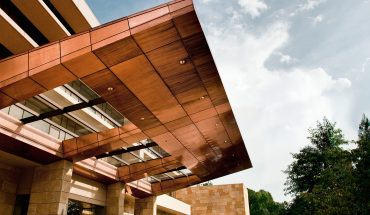by Elizabeth Lincicome
“We’re very proud of our stoplight,” says potter Bonnie Burns, showing a visitor around the compact and charming town of Seagrove, population 228. The Pottery Capital of America might be small in size, but its artistic significance is anything but.
Just over an hour west of Raleigh on U.S. 64, the town – and its broader community on and around the North Carolina Pottery Highway – is home to 125 potters and 85 studios. The work they do in this 30-square-mile area, in many cases, is known worldwide. Seagrove’s artists are drawn to the area’s vibrant creativity. They’re also here for the clay.
Native Americans were the first to discover the area’s abundant deposits, followed by 18th-century English and German immigrants. Today, some of Seagrove’s potters are direct descendants of those first settlers; others are transplanted artists from all over the world.
“We don’t have competition; we have contemporaries,” says potter Benjamin Burns, Bonnie’s husband, as he throws a pot in the back room of their Great White Oak Gallery. “Everyone has their own specialty, and there is usually a market for their unique goods.” His hands pull the clay up from a rotating wheel to create a pot. “The more artists, the better.”
“The key to surviving in this business,” says Bonnie Burns, who is also the secretary of the Seagrove Area Potters Association, “is to make sure your pots are special…make sure they come from your heart.” Great White Oak’s pots could be described as contemporary with an Asian influence.
“There’s a circle of energy between the potter, his wheel and the clay,” Benjamin Burns says. “We all make something different because we all have different energies.”
Former Seagrove mayor David Garner, a potter of 44 years, and his wife Deborah have an energy of their own. Their Turn and Burn Pottery features his works, which are so popular that he has third-generation customers. He does not market or advertise his work; his following is completely word-of-mouth. They come for his unusual works, created with a method called horse hair raku. This Native American technique involves applying hair one strand at a time directly to the pots at roughly 1,600 degrees. “People bring in all sorts of hair for me to put in their pottery. Horse, cat, grandma…you name it,” David says.
Another unique pottery within the town of Seagrove is Uwharrie Crystalline Pottery, owned by William and Pamela Kennedy. This self-taught couple has mastered the art of growing actual crystals on their pots. In a process that takes from seven to 10 days, the Kennedys grow crystals from zinc oxide powder on the surface of the pottery during the firing process, which takes place at 2,340 degrees.
“We’ve always loved rocks and crystals,” says Pam, “but my husband was only experimenting with crystalline as a hobby in our backyard until his job of 23 years up and left the country.” At the end of 2002, William was informed his hosiery mill job would be outsourced to Mexico. Wasting no time, the Kennedys rented a studio and had their own pottery business up and running by May 2003. “It was a total leap of faith,” Pam says. William says in the past 11 years he’s sold pots to people from all over the country and all over the world, and he’s not once looked back. “What a great way to make a living.”
As much as there is to see in town, you have to drive out to really experience Seagrove. The majority of potteries sit off Highway 705, which in 2008 the state designated as North Carolina’s Pottery Highway. It’s a scenic route, dotted by farms, silos, pastures, and the Uwharrie Mountains in the distance. Every potter seems to have pets: dogs, cats, chickens.
Along this stretch is Studio Touya, owned by Hitomi and Takuro Shibata. The Shibatas fire some of their pottery in a wood-burning Anagama kiln in their backyard. This Japanese-style wood kiln is different from the more popular electric and gas kilns. It houses many different chambers and can fire more pots at a time, but less frequently. This type of firing takes days, not hours, and is backbreaking work. Someone must keep the kiln burning for five straight days and nights, constantly feeding it wood. For this reason, the Shibatas only fire two or three times a year.
Off Highway 705, in Moore County a few miles outside of downtown Seagrove, is Jugtown Pottery, the area’s oldest continuously working pottery. The minute you pull into the dirt parking lot you will understand why this place is known for keeping the past alive. Vernon and Pam Owens, along with their son, Travis, are the faces and hands behind Jugtown. Although Vernon is the master potter, he humbly refuses the title: “There are no master potters,” he says, “only potters. And some days are better than others.”
The Owenses’ connection to Jugtown dates back to 1917, when Vernon’s grandfather, J.H. Owens, worked for the pottery’s then-owners, Jacques and Juliana Busbee of Raleigh. Vernon Owens joined Jugtown in 1960, and purchased the business in 1983.
“Beyond the function of a pot, there comes from time to time a piece or two in which form, glaze, and fire perfectly align and a harmony is created that extends beyond just the physical,” says Vernon’s wife, Pam. “If the result is that the person who comes into contact with our pottery experiences this harmony, then our purpose is fulfilled.”
Travis Owens, who graduated from N.C. State in 2008 with a bachelor’s degree in art and design, says what sets his family’s pottery apart is that “the things that we make follow the Busbee tradition and aesthetic, which is a classic form with a glaze to match,” he says. “We create understated, yet elegant pottery that is pleasing to the eye.”
Seagrove potters can be found in their studios and shops most weekdays during business hours. For more information on visiting Seagrove, go to DiscoverSeagrove.com. The site lists the area’s potters and provides links to each of their own sites.
Behind the Scenes
Pottery Crawl
May 10, 2014
Twelve Seagrove potteries will open their studios May 10 for the fourth annual Behind the Scenes Pottery Crawl.
From 11 a.m. to 5 p.m, visitors can meet potters while they demonstrate throwing, shaping, glazing, firing, and decorating their wares. Featured potteries include Avery Pottery and Tileworks; Blue Hen Pottery; Bulldog Pottery; Chris Luther Pottery; Crystal King Pottery; Dean and Martin Pottery; Eck McCanless Pottery; From the Ground Up; Johnston & Gentithes; Luck’s Ware; N.C. Pottery Center; and Thomas Pottery.
The event – which will raise money for the Northern Moore Family Resource Center – will include food and wine pairings at each studio and a raffle for a piece from each potter. Individual tickets are $35; patron tickets are $100. Check in at the Northern Moore Family Resource Center at 125 E. Salisbury St., Robbins, or at N.C. Pottery Center at 233 East Ave., Seagrove. Information: nmfrc.com or 910-948-4324.






